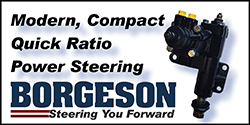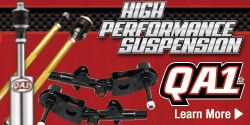nm9stheham
Well-Known Member
For anyone interested, as far as a data point for the even-ness of factory balance work, all 8 pistons and rods, etc., from a '68 273 were disassembled, and all the individual parts weighed to compute the corresponding bobweights, including big and small end rod weights. There are the original stock factory parts, taken out and marked as to their position.
For the individual piston/rod assemblies, the corresponding bobweights varied over a range of 19 grams. (This would be as if identical piston-rod assemblies were installed in pairs.) The bobweight ranged from 2108 to 2127 grams.
When bobweights are computed with the assembles paired like they were actually installed in the engine, the variation goes down in this particular engine, as the heaviest assembly was paired with an average weight assembly. The bobweight variations were 11 grams between the 4 crankpins (journals); it ranged from 2109 to 2120 grams for this engine.
I'd suspect that the worst case factory variation could easily be 15 grams, and might be as much as 20 grams across all production.
If anyone is interested in the detailed numbers, let me know.
For the individual piston/rod assemblies, the corresponding bobweights varied over a range of 19 grams. (This would be as if identical piston-rod assemblies were installed in pairs.) The bobweight ranged from 2108 to 2127 grams.
When bobweights are computed with the assembles paired like they were actually installed in the engine, the variation goes down in this particular engine, as the heaviest assembly was paired with an average weight assembly. The bobweight variations were 11 grams between the 4 crankpins (journals); it ranged from 2109 to 2120 grams for this engine.
I'd suspect that the worst case factory variation could easily be 15 grams, and might be as much as 20 grams across all production.
If anyone is interested in the detailed numbers, let me know.
















